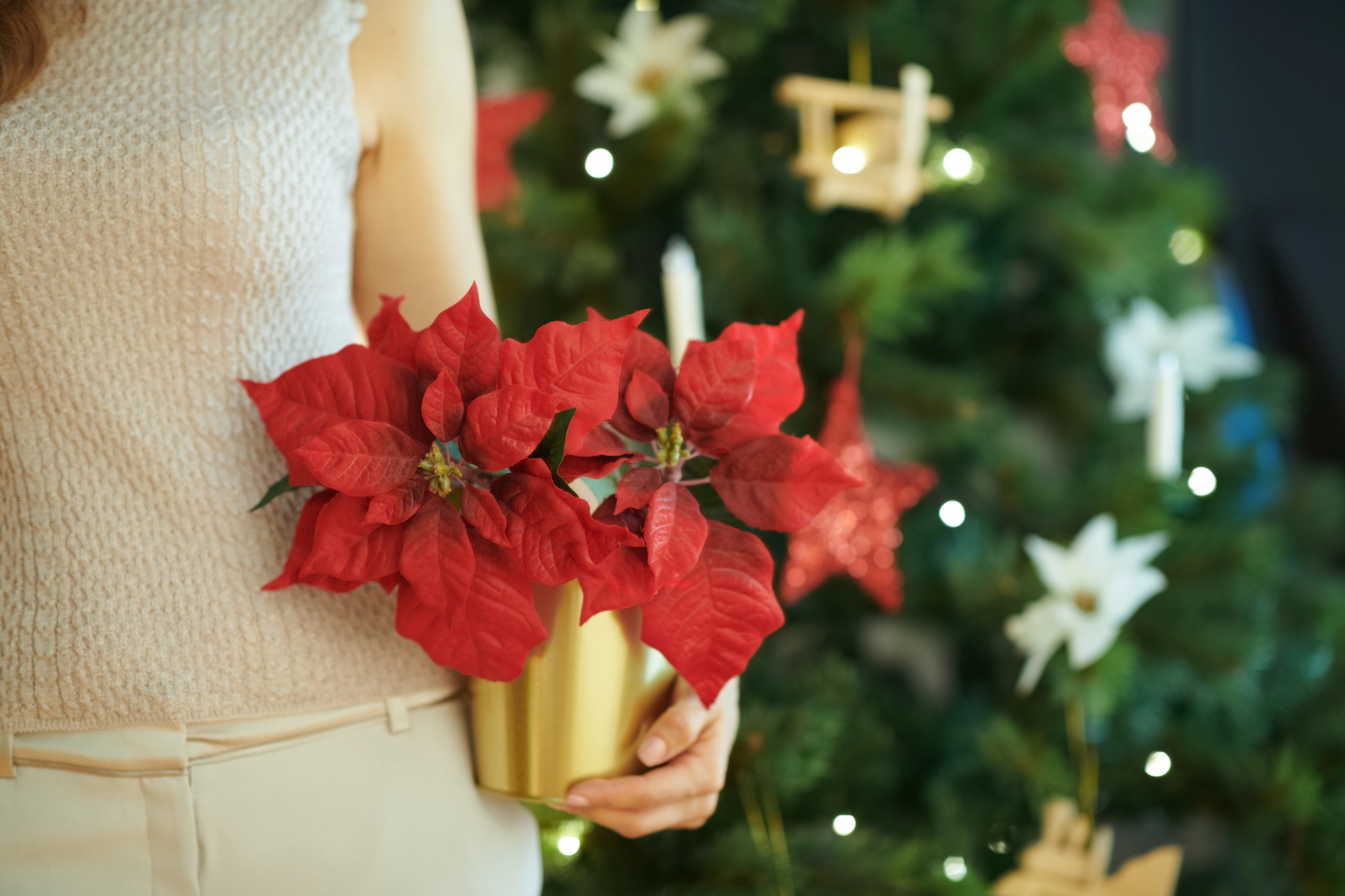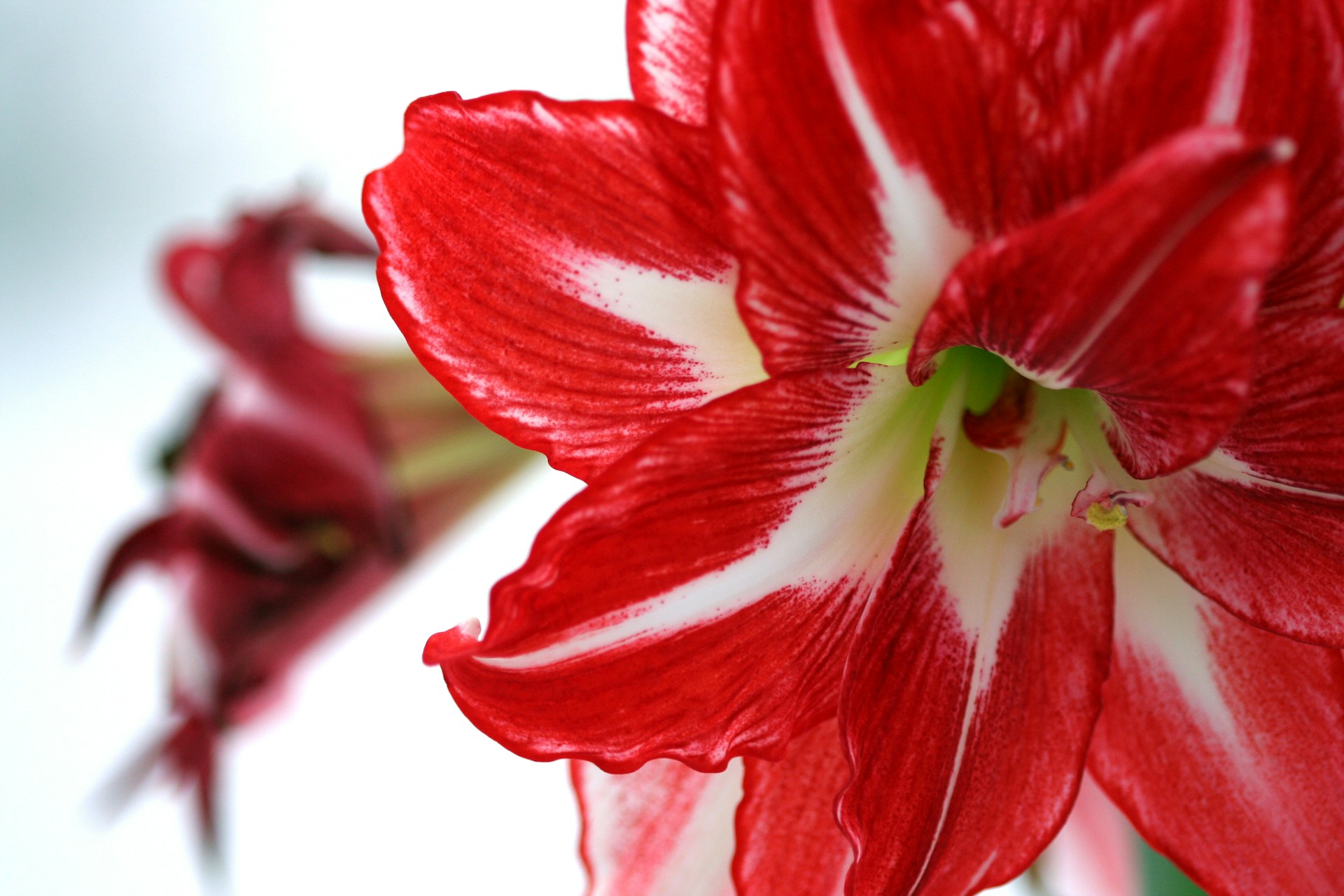During the holiday season, plants have a way of adding warmth and charm to our homes. From the vibrant reds of poinsettias to the delicate blooms of paperwhites, these seasonal favorites bring life and color to winter’s gray days.

Holiday plants have played a role in our celebrations for years, symbolizing joy, renewal and tradition. These favorite plants do more than decorate, with a midwinter peek at the summer months they create an inviting atmosphere perfect for gathering with loved ones.
The plants we love
Poinsettias are classic and iconic holiday plants with bright red or white bracts that last through the season. They were introduced to the United States in the 19th century by Joel Poinsett, the first U.S. ambassador to Mexico.
Paperwhites feature delicate white blooms with a light, sweet fragrance. These bulbs are part of the daffodil family and thrive in shallow pots or decorative containers.
Amaryllis are known for their dramatic, trumpet-shaped flowers in red, white, pink or striped varieties. Easy to grow indoors and make great gifts for friends and family.
Christmas Cactuses are low-maintenance succulent plants with cascading blooms in vivid colors. These are long lived and often passed down as family heirlooms. If your Christmas cactus doesn't bloom during Christmas it may be more of an Easter cactus or a Thanksgiving Cactus. The amount of daylight the plants receive dictates the bloom time.

Why we love them
These holiday plants bring vibrant colors and life to our homes during the winter season. They brighten spaces with their blooms when outdoor gardens are dormant or deep under snow. These plants are easy to enjoy without much upkeep, making them a welcome addition to holiday decor.
A glimpse of a blooming or flowering plant offers hope to many in the long cold stretch of winter. Hope for spring, dreams of summer and a reminder that even in the harshest seasons, life finds a way to thrive and bring beauty to our surroundings.
Give them to friends
Living plants that are blooming or about to bloom are a thoughtful gift that feels personal without the pressure of selecting a specific item. They’re a perfect choice for hosts, coworkers or loved ones when you want to give something beautiful but temporary.
Because these plants are often not a long-term commitment giving them to friends is peak friendship. There’s no dusting or storage required for plants. A blooming plant adds seasonal cheer and is a kind gesture that feels warm and festive without adding clutter.
Do these plants die at the end of the holiday season? Not necessarily. With a little care and effort, they can live on.
Keeping them alive
Bulbs, poinsettia and cactuses all have different needs in your home. But play your cards right and you may have the ability to keep them alive and happy in your home.
Forced bulbs, both amaryllis and narcissus, are fairly straightforward and don’t regularly struggle to thrive in your home. Plant them, give them water and sun, and these bulbs will more than likely happily bloom.
Often, poinsettias struggle to thrive after leaving the greenhouse or nursery where they were purchased or grown. This is because the greenhouse has grown them at the perfect temperature and humidity, and our homes don’t match that. Poinsettias need good sun, a warm room and plenty of water for a happy life in your home. With proper care, they can be kept alive and will be beautiful again for next year.
Christmas cactuses are long-living plants that will live on. In fact, occasionally they’re passed down through the years in families because of their longevity. They don’t like direct sunlight or a lot of water, so they kind of thrive on being ignored. Which makes them perfect for a lot of new plant owners.
Regrowing forced bulbs
Growing a bulb out of its natural growing season is called forcing. Once a bulb is forced, you can grow it again. It’s better to take a chance at regrowing a forced bulb than throwing it away as trash.
Amaryllis bulbs are often successfully regrown if you trim back the stem after flowering and let the resulting leaves grow until midsummer. The bulb can be dug up and refrigerated before planting again in late fall. The bulb should produce another flowering stem.
Narcissus, or Paperwhites, are smaller bulbs and are better planted outdoors in a garden once they bloom. After a year or two of living outdoors, the blubs should be regulated to normal cycles and bloom.
Winter’s promise
Holiday plants are more than just seasonal decorations; they’re reminders of nature’s resilience and beauty during the long winter months. They remind us that summer will eventually be back, but for now, we have winter.
Whether you enjoy their vibrant color, sweet fragrance or sentimental value, these plants bring warmth and joy to the season. Many of these favorites can live on with a bit of care, promising future blooms and a lasting connection to the traditions they represent.
Laura Sampson of Little House Big Alaska is on a mission to teach modern family-oriented home cooks how to make old-fashioned foods new again. She shares her passion for home cooking, backyard gardening and homesteading on her website and blog.
This post was originally published on Food Drink Life.
